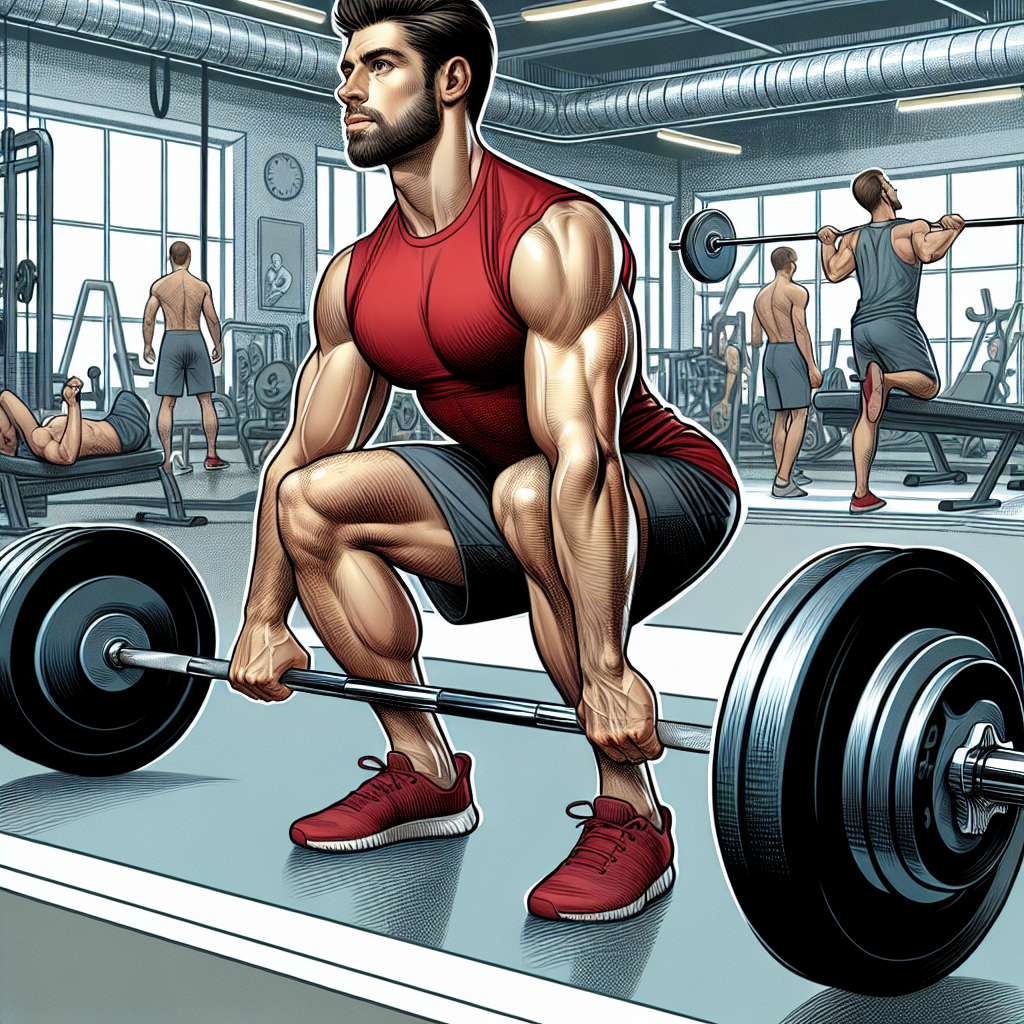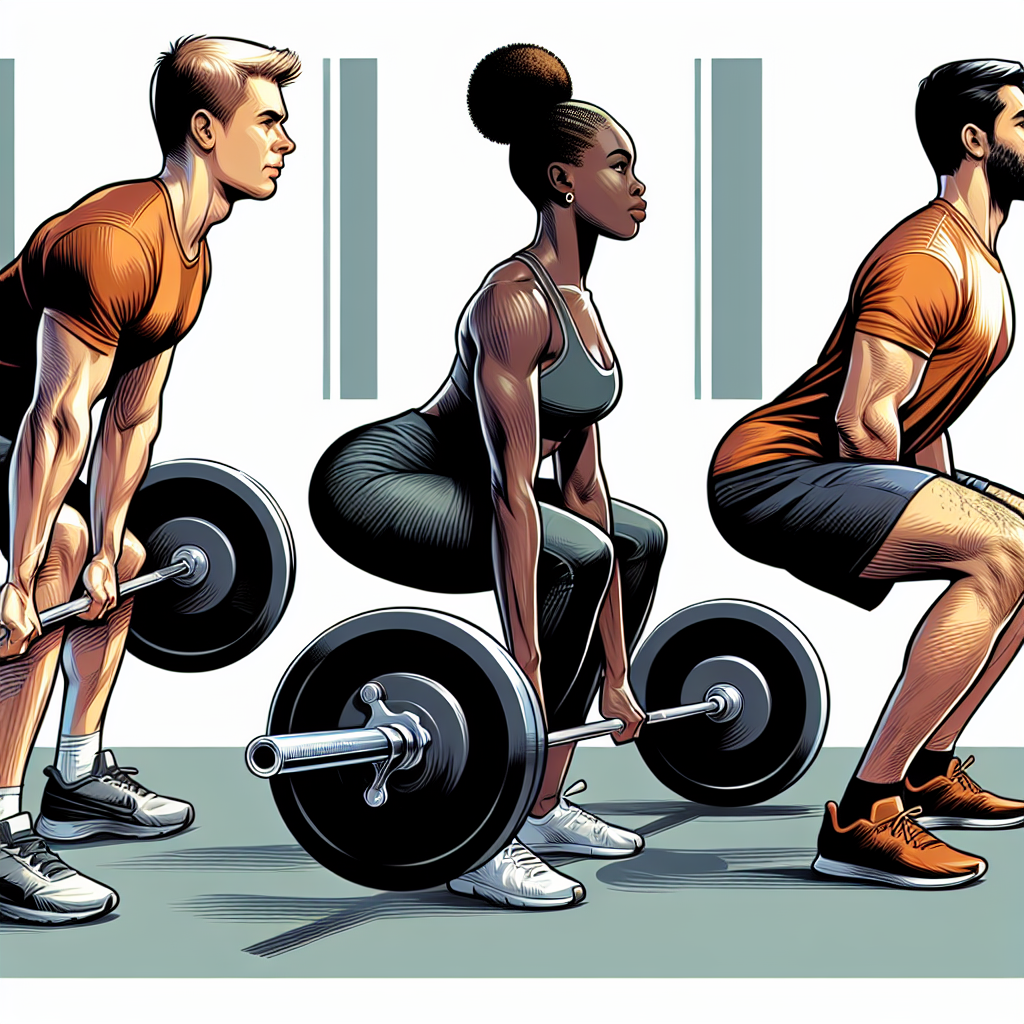Barbell Back Exercises
Barbell Back Exercises
G’day, fellow gym junkies and iron warriors! Are you ready to elevate your strength training game to new heights? Whether you're a seasoned powerlifter or just starting your fitness journey, mastering barbell back exercises can transform your workouts and catapult you towards those personal records you've been dreaming of. From deadlifts to barbell rows, these powerhouse moves are essential for building muscle and achieving that V-tapered back we all envy. Stick around as we dive into back workouts that pack a punch, share gym tips to perfect your technique, and introduce you to the ultimate gym buddy—the Barbell Jack, your new best mate in the weight room.
Mastering Barbell Back Exercises
Diving into barbell back exercises is like unlocking a treasure chest of strength training gold. These exercises are foundational to building a strong, muscular back, enhancing overall fitness and powerlifting performance. Whether you're perfecting deadlifts or mastering rows, these movements are key to achieving a robust physique. Let's explore some essential barbell movements and how to execute them safely while avoiding common pitfalls.
Essential Barbell Movements
Barbell Rows: A classic for a reason. This exercise targets the middle back, traps, and lat muscles. Keeping your back straight, hinge at the hips, and pull the barbell towards your lower chest.
Deadlifts: The king of lifts. Deadlifts work multiple muscle groups, including your back, glutes, and legs. Ensure proper form to maximize gains and minimize risk.
Pull-ups with Barbell: Yes, the barbell can aid your pull-up game. Use the barbell for weighted pull-ups to increase resistance.
-
Key Tip: Focus on form over weight to prevent injury.
-
Pro Insight: Consistency trumps intensity for building strength over time.
Safe Lifting Techniques
Safety first! To lift safely, start with lower weights and progress gradually. Keep your core engaged and maintain proper posture.
-
Warm Up: Always begin with a thorough warm-up to prepare your muscles and joints.
-
Use a Mirror: Visual feedback helps correct posture and form in real-time.
-
Listen to Your Body: If something feels wrong, stop immediately and reassess your technique.
Injury Prevention: Use lifting belts and wrist straps when necessary. These tools support your body during heavy lifts.
Common Mistakes to Avoid
Even seasoned lifters can fall into bad habits. Common mistakes include rounding the back, using momentum, and ignoring warm-ups.
-
Rounded Back: Keep it straight during lifts to avoid spinal injury.
-
Momentum Reliance: Use controlled movements to ensure muscle engagement.
-
Skipping Warm-Ups: This can lead to strains and injuries.
Real-World Example: A lifter who focused solely on heavy weights without correcting form suffered a back injury, halting progress.
-
Lesson Learned: Balance weight with technique for sustainable growth.
Strength Training for a Powerful Back
Strength training is crucial for developing a powerful, muscular back. This section explores how targeting specific exercises can enhance muscle growth and powerlifting performance. From deadlifts to comprehensive back workouts, discover how to effectively integrate these into your routine for maximum results.
Building Muscle with Deadlifts
Deadlifts are the cornerstone of effective strength training. They engage multiple muscle groups and build a solid back foundation.
Start Small: Begin with manageable weights to perfect your form. Gradually increase as your strength improves.
-
Key Technique: Keep the bar close to your body to maintain balance.
-
Focus on Form: Drive through your heels to lift, engaging your core and back muscles.
Benefits: Deadlifts enhance lower back strength, improve posture, and boost overall powerlifting performance.
-
Tip: Include deadlifts in your weekly routine to see significant gains.
Enhancing Powerlifting Performance
Powerlifting requires not just strength but strategy. Enhancing performance involves targeted exercises and consistent practice.
Core Exercises: Incorporate squats and bench presses to complement your back workouts for holistic strength.
-
Repetition and Consistency: Regular practice of compound lifts is essential.
-
Recovery Time: Allow muscles to rest and grow stronger between sessions.
Case Study: A powerlifter increased their squat max by 15% by integrating comprehensive back workouts twice a week.
-
Takeaway: Balanced strength training programs yield better performance results.
Integrating Back Workouts into Routine
A well-rounded routine incorporates diverse back exercises. This not only prevents monotony but also ensures balanced muscle development.
-
Plan Varied Workouts: Include deadlifts, rows, and pull-ups in your weekly schedule.
-
Focus on Different Angles: Target different muscle groups by varying grips and positions.
-
Monitor Progress: Keep track of improvements and adjust weights accordingly.
Real-World Insight: Consistency and variation are key. A lifter who diversified their back workouts saw a 20% increase in muscle mass over six months.
-
Practical Advice: Keep changing your routine every 4-6 weeks to avoid plateaus.
Gym Tips for Optimal Performance
Optimizing your gym performance involves more than just lifting weights. Perfecting your form, leveraging gym tools, and pushing past plateaus are essential for continued progress. This section provides practical gym tips to help you perform at your best.
Perfecting Your Form
Perfect form is the foundation of effective strength training. It ensures muscles are engaged correctly and reduces injury risk.
Mirror Use: Use mirrors to monitor and correct your posture during exercises.
-
Engage Core: A strong core supports proper form across all lifts.
-
Controlled Movements: Focus on slow, deliberate lifts to fully engage muscles.
Key Insight: Even small adjustments in form can lead to significant improvements in performance and safety.
-
Recommendation: Attend a form-check session with a personal trainer for personalized feedback.
Barbell Jack: Your Gym Buddy
Meet the Barbell Jack, your new best mate in the weight room. This handy tool makes loading and unloading weights a breeze, saving your back from unwanted strain.
-
Effortless Changes: Quickly swap plates without awkward movements.
-
Safety First: Minimize the risk of injury by avoiding heavy lifting of weights off the floor.
-
Time Saver: Spend more time lifting, less time fumbling with weights.
Why Use It? The Barbell Jack streamlines your workout, allowing you to focus on lifting rather than logistics.
-
Pro Tip: Incorporate it into your routine for efficient weight transitions.

Avoiding Workout Plateaus
Plateaus can be frustrating, but they're not insurmountable. With the right strategies, you can push past these sticking points.
-
Vary Your Routine: Change exercises, reps, and weights regularly.
-
Rest and Recover: Ensure adequate recovery to allow muscles to rebuild stronger.
-
Set New Goals: Keep motivation high by setting challenging, yet achievable targets.
Case Study Insight: A lifter who introduced periodization into their routine broke through a six-month plateau, increasing their bench press by 10%.
-
Takeaway: Regularly updating your workout plan keeps progress steady.

Muscle Building Strategies
Building muscle requires a strategic approach. This involves not just lifting weights but also incorporating progressive overload, understanding the importance of nutrition, and keeping track of progress. Here, we delve into effective strategies for muscle growth.
Progressive Overload Techniques
Progressive overload is the principle of gradually increasing the demand on your muscles to stimulate growth.
-
Increase Weights: Gradually add more weight to your barbell each session.
-
Repetition Enhancement: Increase the number of reps or sets to push muscle limits.
-
Vary Intensity: Use techniques like drop sets and supersets to challenge muscles.
Implementation: Keep a workout log to track changes and ensure consistent progression.
-
Tip: Regularly assess your progress and adjust your routine accordingly.
Importance of Nutrition and Recovery
Nutrition and recovery are as important as the workouts themselves. Fuel your body with the right nutrients and ensure adequate rest for muscle repair.
-
Protein Intake: Essential for muscle repair and growth. Aim for 1.6-2.2 grams per kg of body weight daily.
-
Hydration: Maintain hydration to support metabolic processes and muscle recovery.
-
Sleep Quality: Prioritize sleep to enhance muscle recovery and overall performance.
Key Insight: Balanced nutrition and effective recovery practices accelerate muscle building.
-
Recommendation: Consult a nutritionist for a personalized diet plan.
Tracking Progress for Success
Tracking your progress keeps you motivated and informed about your achievements. It helps identify what's working and what needs adjustment.
Journaling: Maintain a workout log to record exercises, weights, and reps.
-
Reflect on Progress: Regularly review your journal to celebrate wins and plan improvements.
-
Tech Tools: Use fitness apps for detailed tracking and analysis.
Real-World Example: A lifter using a detailed tracking system noticed a clear pattern in strength gains, leading to targeted improvements in weak areas.
-
Benefit: Consistent tracking leads to informed decisions and sustained progress.
Elevate Your Lifting Technique
Lifting isn't just about brute strength; it's a skill that requires technique and consistency. This section focuses on setting personal records, staying motivated, and embracing the fitness journey with a positive mindset.
Setting Personal Records
Setting personal records (PRs) is a benchmark of progress in your fitness journey. It represents your potential and motivates you to push further.
-
Identify Your PRs: Determine your current max lifts for various exercises.
-
Plan Incremental Goals: Break down long-term PR goals into smaller, achievable steps.
-
Celebrate Achievements: Recognize and celebrate when you hit new PRs.
Key Insight: Regularly setting and achieving PRs keeps you engaged and focused on improvement.
-
Motivational Tip: Use PRs as milestones to guide your training.
Motivational Tips for Consistency
Staying motivated is crucial for consistency in your fitness journey. Here are some tips to keep your spirits high and your gym visits regular.
-
Create a Routine: A structured schedule helps form consistent habits.
-
Find a Workout Buddy: Partner up for accountability and shared motivation.
-
Mix It Up: Vary your workouts to keep them exciting and challenging.
Case Study: A gym-goer found that joining a fitness community boosted their motivation, leading to more frequent and enjoyable workouts.
-
Takeaway: Community and variety can significantly enhance motivation.
Embracing the Fitness Journey
Embrace your fitness journey as a lifelong commitment to health and strength. It's about enjoying the process as much as the results.
Mindset Shift: Focus on progress, not perfection. Every step forward counts.
-
Appreciate Small Wins: Recognize and celebrate even the smallest achievements.
-
Stay Patient: Understand that building strength and muscle takes time.
Final Thought: Your fitness journey is unique. Embrace every challenge and triumph as part of a rewarding path to personal growth.

Leave a comment
Please note, comments must be approved before they are published